Words by Zoe Martyn | Photographs by Michelle Troop
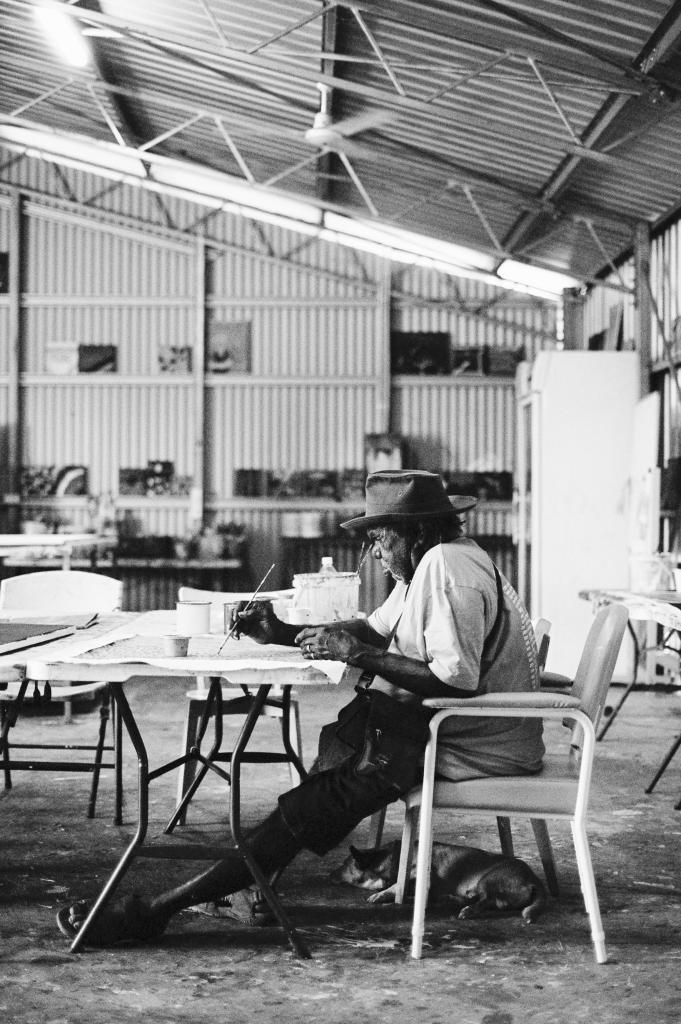
Photograph by Michelle Troop
The definition of a studio is ‘a room where artists work’. In the Martu heartlands, the Parnngurr art studio (also known as ‘the art shed’) is more than a place of work. It is a place to gather, to share, and to connect. It is a space where big ideas and concepts are made visual. Marks on canvas that tell the stories of the people making them, and of their ancestors- it tells the stories of the land & how to care for it. The work is political, it is personal, and it is deeply healing. The rhythmic beat of the shed ebbs and flows with the seasons, family life, cultural responsibilities, and with Sorry time.
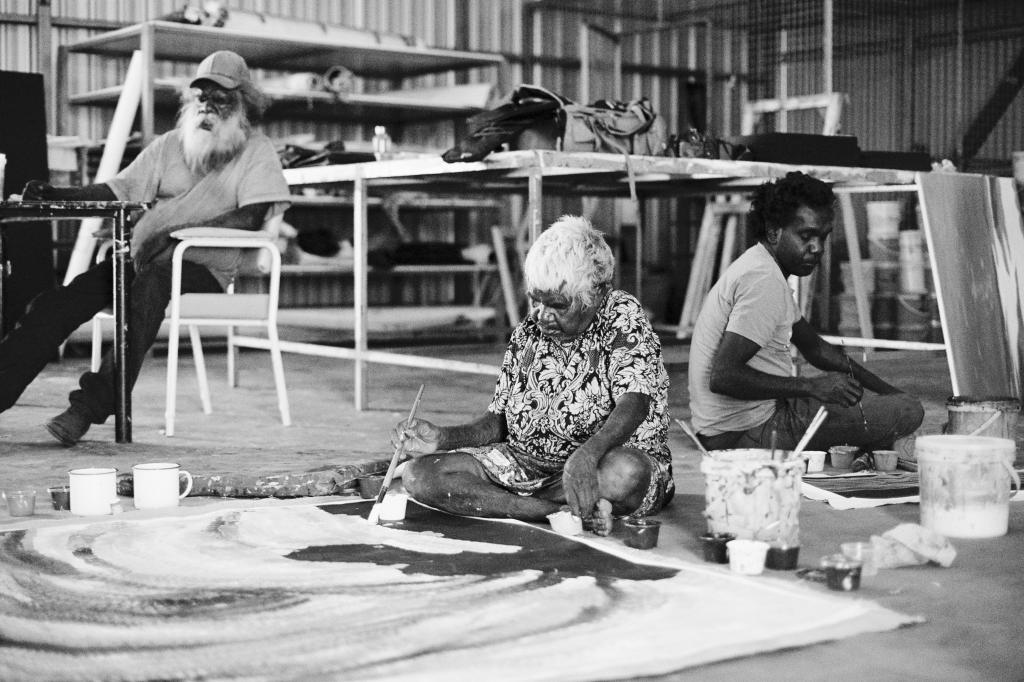
Photograph by Michelle Troop
Mornings in Parnngurr often start by meeting the old people at the shop, where they can be found sitting out front with a cuppa tea in hand. The microwave sits on a makeshift shelf outside- emitting a slow buzz as it heats up a breakfast pie. Half a dozen dogs lie around, unfazed by the people trying to navigate their way around them. There is chatter and laughter.
“What do you think about going to the art shed?”
A knowing nod and a gesture towards shopping that has just been bought that needs to be taken home before any painting can begin is acknowledged. We pile into the motorcar with the chosen jarntu (dog) allowed to ride up front whilst the rest of the pack chase the tyres then veer off the track to take the short cut home. Food is delivered, then it’s time to head to the shed.
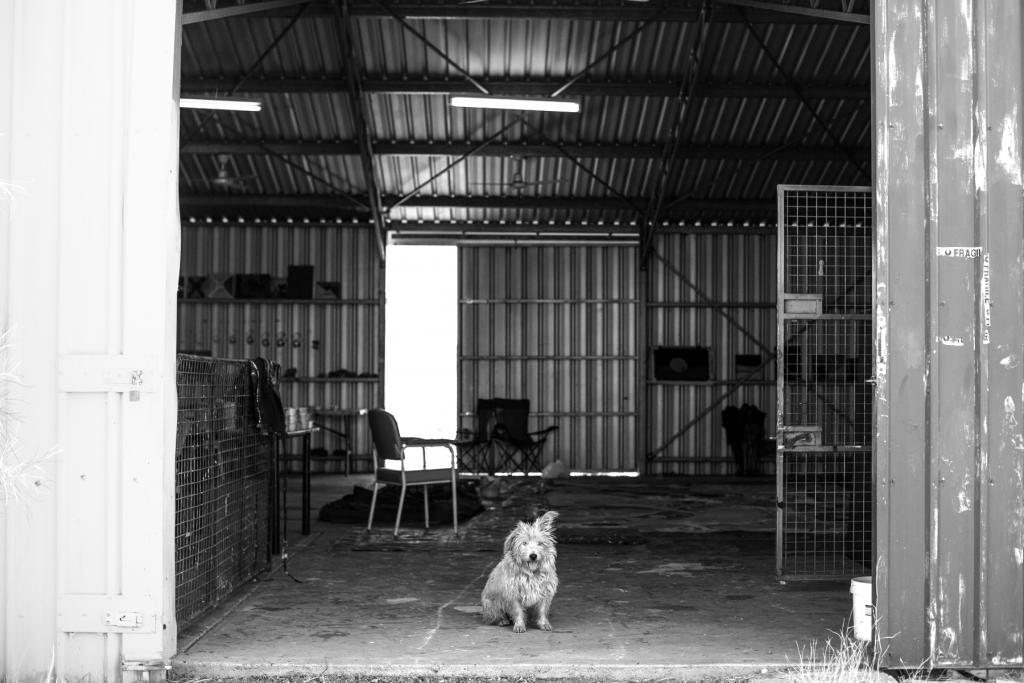
Photograph by Michelle Troop
Opening the big metal sliding doors- light floods in and another day in the shed begins. The all-important gate is quickly pulled across with only the prized jarntukaja (dogs) allowed in. Furry little heads pop under the gate trying to sneak in- with some even trying their luck by jumping over the gate! They are quickly met with growls to “get out!”
Everyone quickly settles in- picking up where they left off the day before, or chatting about their next painting. Some artists are working towards exhibitions, others on a collaborative painting, and others who come in to do the occasional artwork. What canvas size and what paint colours to choose are discussed, the kettle is boiled, and cuppa teas and biscuits delivered. Arts workers prepare more canvas- a never-ending job that speaks to the demand and interest that people have in painting. Throughout the day family, community members or visiting service providers pop in to see ”what’s happening?”. Paintings are photographed and catalogued in preparation for sale in the Martumili gallery, or to be put aside for exhibitions and awards. They are rolled and wrapped-protecting them for the eventual drive back to town (Newman) where they are delivered to the gallery team.
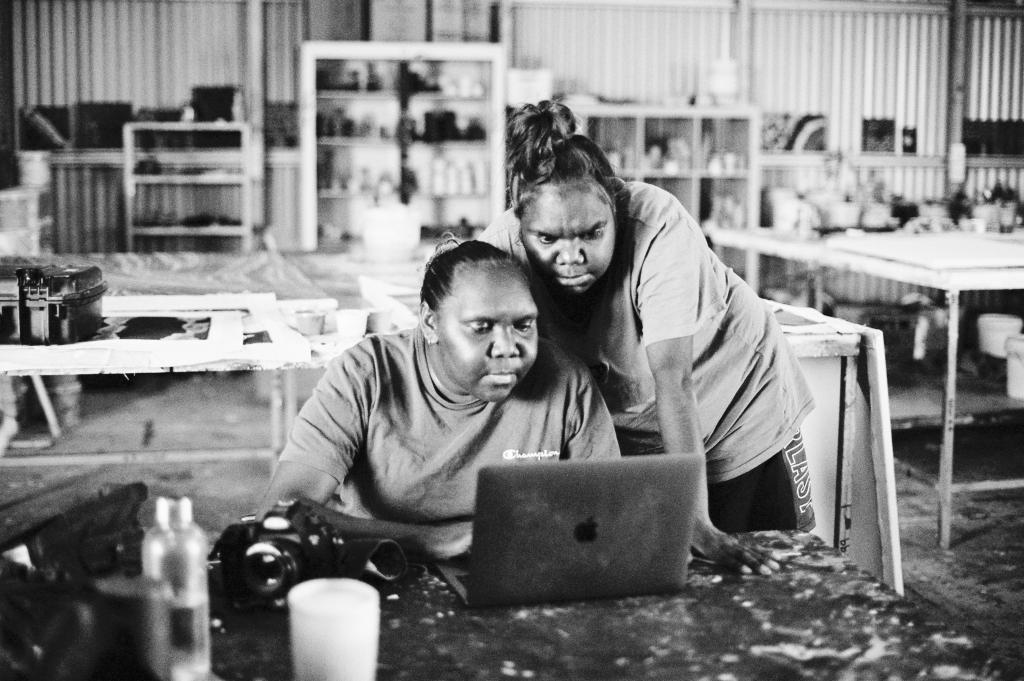
Photograph by Michelle Troop
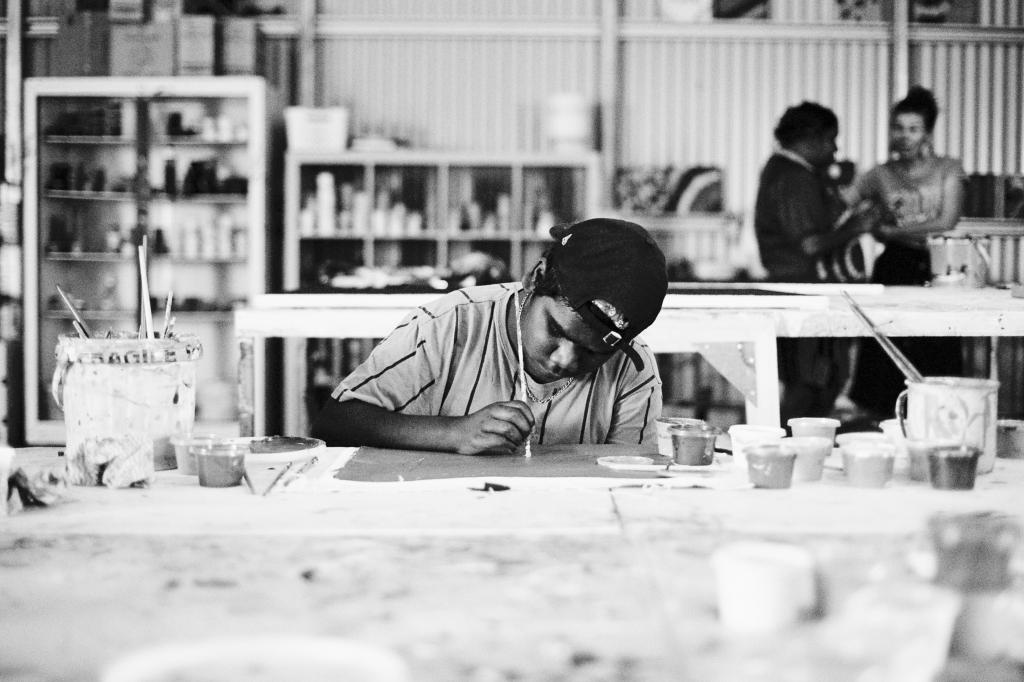
Photograph by Michelle Troop
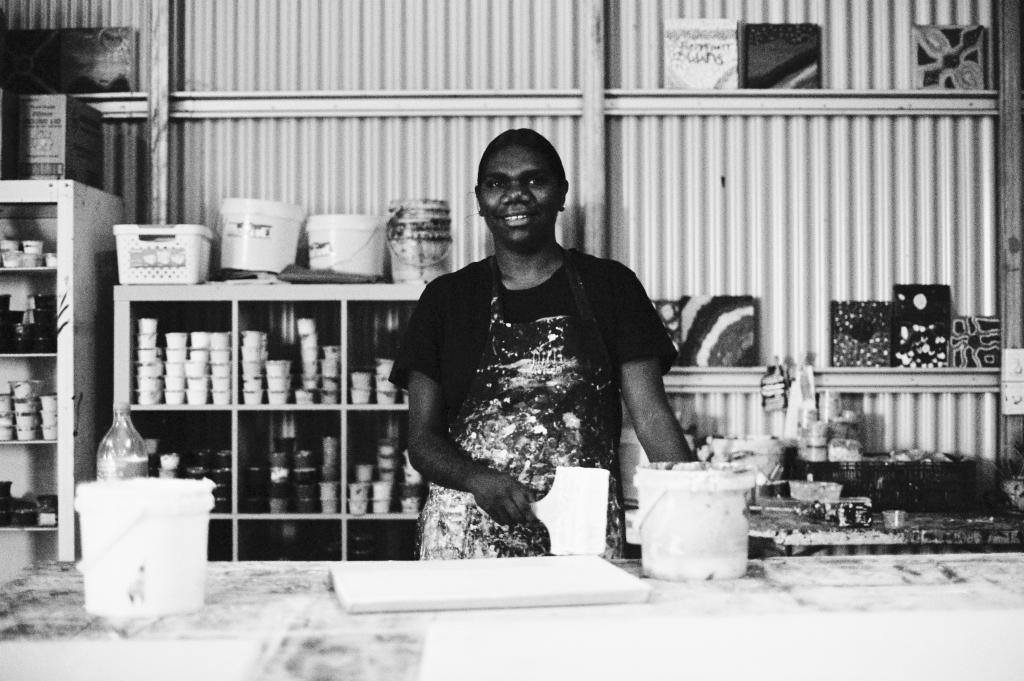
Photograph by Michelle Troop
The ranger team pops in to chat with the old men about an upcoming trip. A day trip with the school perhaps, or an over-nighter somewhere. A day trip is agreed upon- some people say they are too tired to go too far away. As the heat of the afternoon beats down on the tin shed, artists find cushions to lie down on for a nap, others peel home where they can retreat to the comfort of air-conditioning. School’s out- and with that the kids start piling in, looking for money to buy an ice-cream or cool drink from the shop. It signals an end to the day. One last glance at the painting to ponder overnight what may be added tomorrow and with that the shed door slides shut.
Tomorrow the artists become rangers, putting down brushes to tend to the Country they paint. It’s a symbiotic relationship- one informing the other. Hearts are full after these trips, and there is a desire to put down what has been seen and felt- to share the beauty, the stories and to keep them alive. The spirit of the desert made tangible through the mark of the artist.
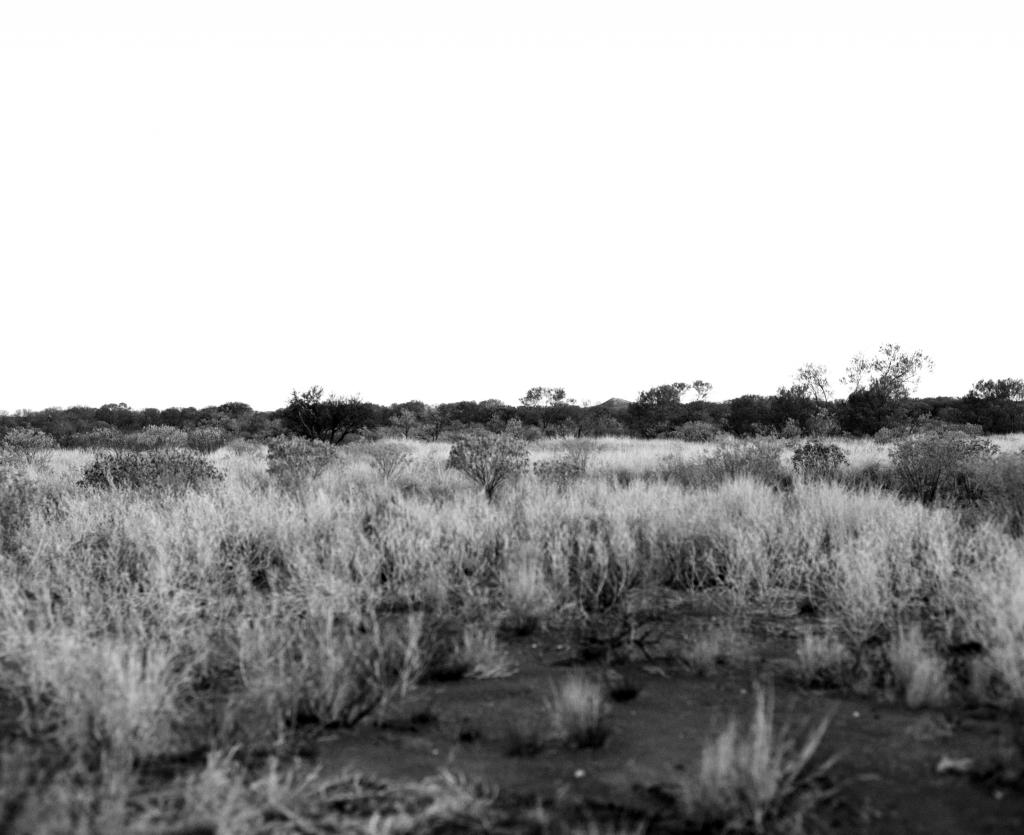
Photograph by Michelle Troop
